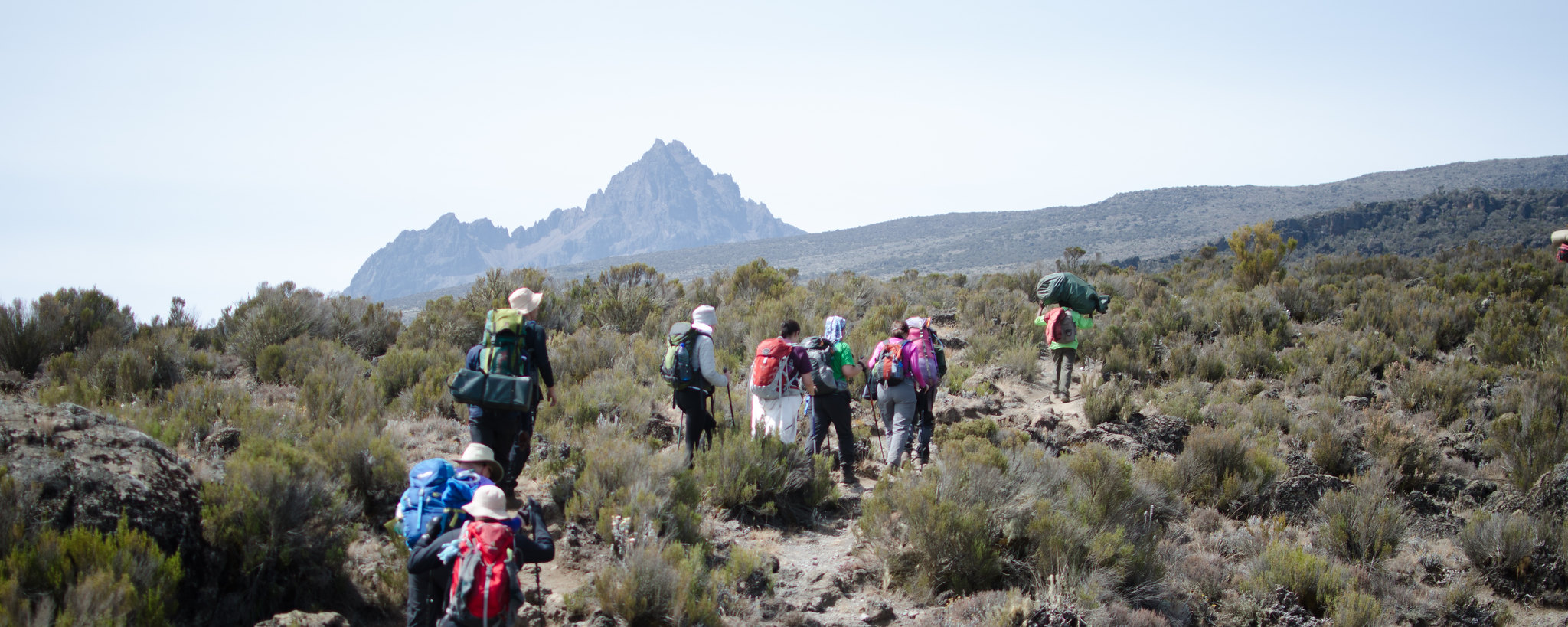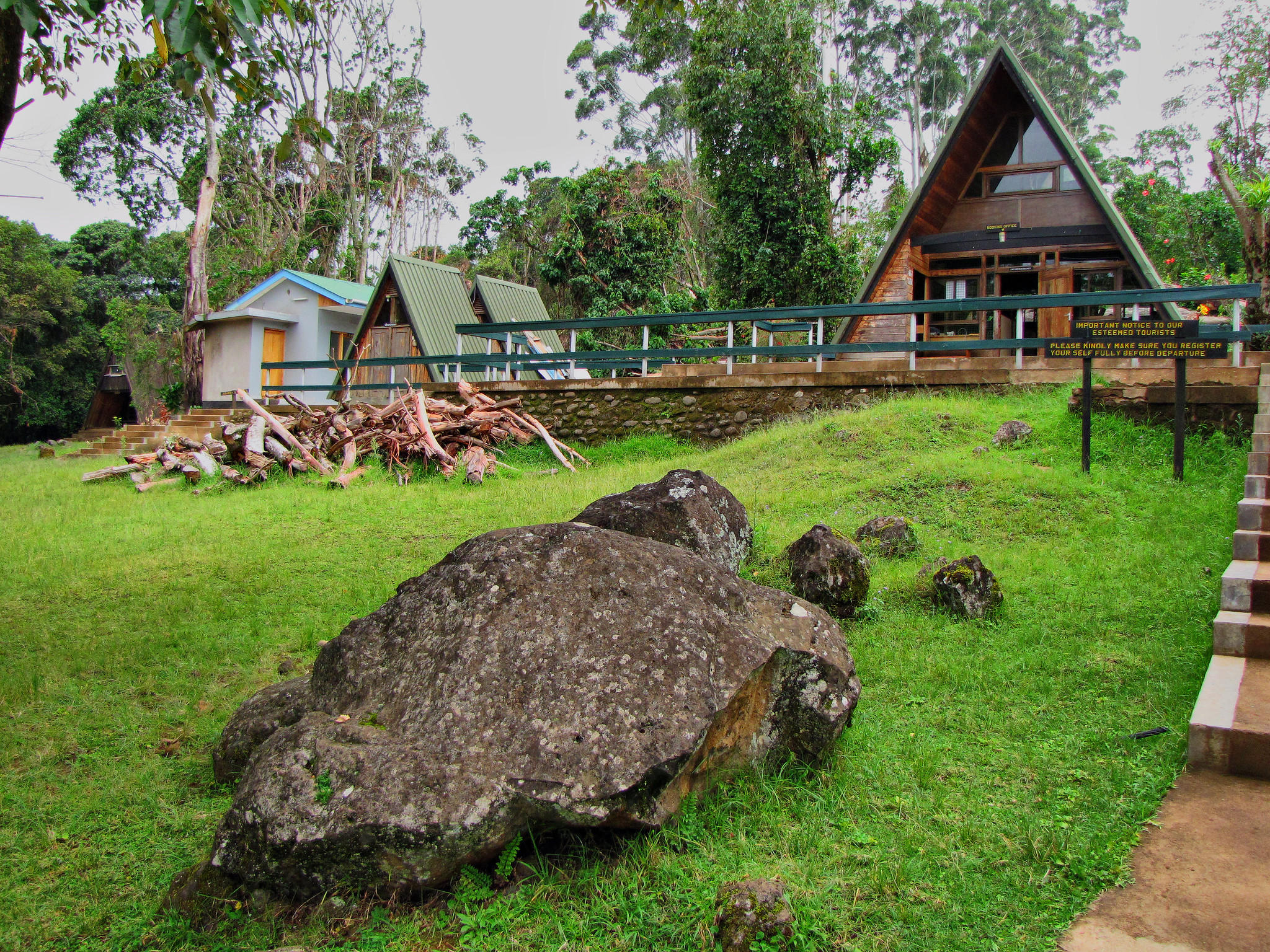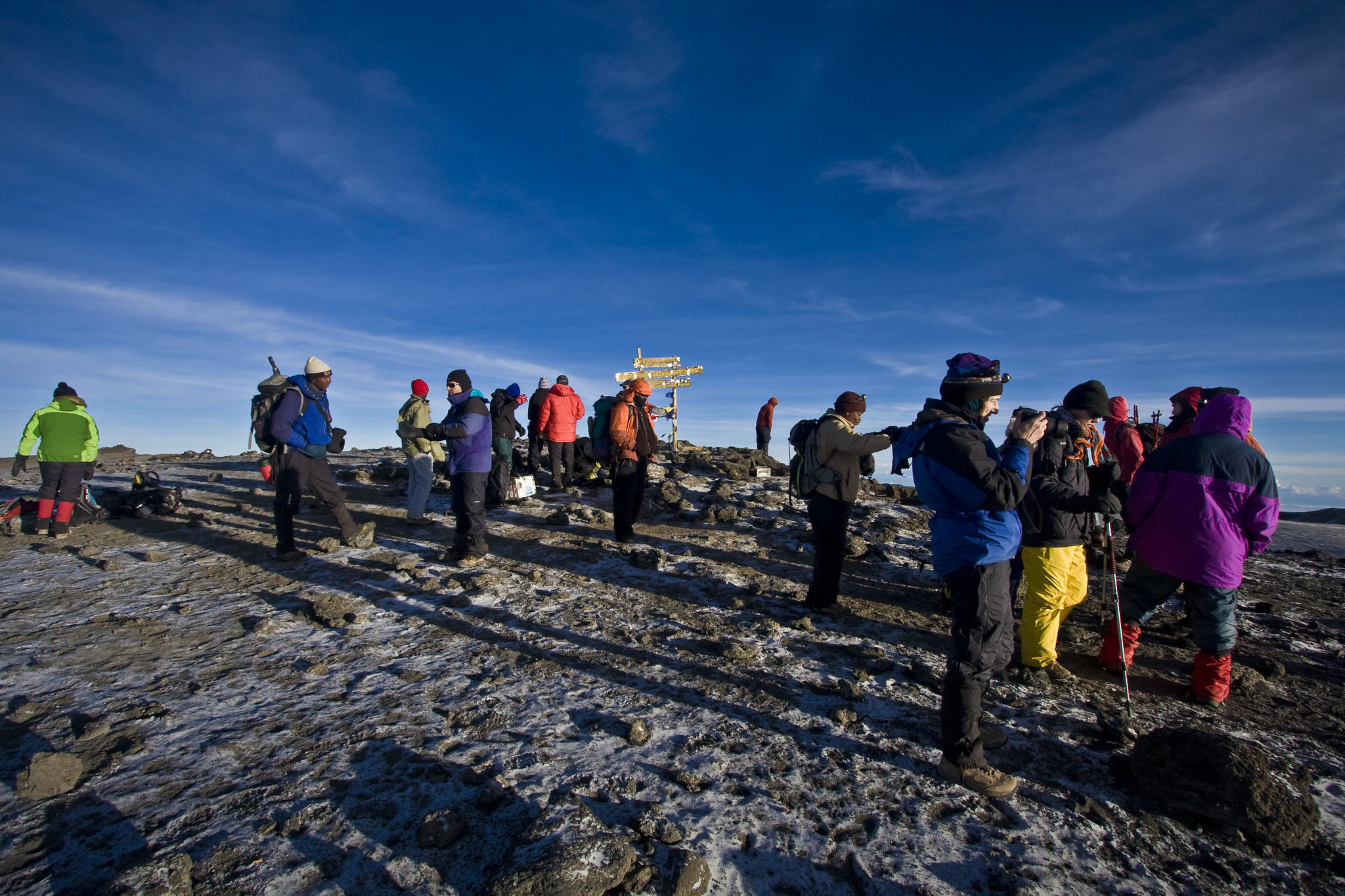Mount Kilimanjaro National Park
Since its official opening in 1977, Mt Kilimanjaro National Park has become one of Tanzania’s most visited parks. Unlike the other northern parks, this isn’t a place to come for the wildlife, although it’s there. Rather, you come here to gaze in awe at a snowcapped mountain on the equator, and to climb to the top of Africa. At the heart of the park is the 5896m Mt Kilimanjaro, Africa’s highest mountain and one of the continent’s most magnificent sights. Kilimanjaro is also one of the world’s highest volcanoes, and it’s the highest free-standing mountain on earth, rising from cultivated farmland on the lower levels, through lush rainforest to alpine meadows, and finally across a lunar landscape to the twin summits of Kibo and Mawenzi. Kilimanjaro’s third volcanic cone, Shira, is on the mountain’s western side. The lower rainforest is home to many animals, including buffaloes, elephants, leopards and monkeys, and elands are occasionally seen in the saddle area between Kibo and Mawenzi.A hike up Kili lures around 25,000 trekkers each year, in part because it’s possible to walk to the summit without ropes or technical climbing experience. Non-technical, however, does not mean easy. The climb is a serious (and expensive) undertaking, and only worth doing with the right preparation. There are also many opportunities to explore the mountain’s lower slopes and to learn about the Maasai and the Chagga, two of the main tribes in the area. There are entry gates at Machame, Marangu (which is also the site of the park headquarters), Londorosi and several other points. Trekkers using the Rongai route should pay their fees at Marangu gate.
Climbing Mt. Kilimanjaro is the highlight of most visitors’ experiences in Tanzania. Few mountains can claim the grandeur, the breathtaking views of Amboseli National Park in Kenya, the Rift Valley, and the Masaai Steppe, that belongs to Kilimanjaro. Hiking on the ‘rooftop of Africa’ — the highest point on the continent at 5896 metres — is the adventure of a lifetime, especially because, if paced well, everyone from seasoned trekkers to first-time enthusiasts can scale the snowy peak. For more information, see the ‘Mountain Climbing‘ section under ‘Things to Do.
Kilimanjaro. The name itself is a mystery wreathed in clouds. It might mean Mountain of Light, Mountain of Greatness or Mountain of Caravans. Or it might not. The local people, the Wachagga, don’t even have a name for the whole massif, only Kipoo (now known as Kibo) for the familiar snowy peak that stands imperious, overseer of the continent, the summit of Africa.
Kilimanjaro, by any name, is a metaphor for the compelling beauty of East Africa. When you see it, you understand why. Not only is this the highest peak on the African continent; it is also the tallest free-standing mountain in the world, rising in breathtaking isolation from the surrounding coastal scrubland – elevation around 900 metres – to an imperious 5,895 metres (19,336 feet).
Kilimanjaro is one of the world’s most accessible high summits, a beacon for visitors from around the world. Most climbers reach the crater rim with little more than a walking stick, proper clothing and determination. And those who reach Uhuru Point, the actual summit, or Gillman’s Point on the lip of the crater, will have earned their climbing certificates.
And their memories.
But there is so much more to Kili than her summit. The ascent of the slopes is a virtual climatic world tour, from the tropics to the Arctic.
Even before you cross the national park boundary (at the 2,700m contour), the cultivated footslopes give way to lush montane forest, inhabited by elusive elephant, leopard, buffalo, the endangered Abbot’s duiker, and other small antelope and primates. Higher still lies the moorland zone, where a cover of giant heather is studded with otherworldly giant lobelias.
Above 4,000m, a surreal alpine desert supports little life other than a few hardy mosses and lichen. Then, finally, the last vestigial vegetation gives way to a winter wonderland of ice and snow – and the magnificent beauty of the roof of the continent.



